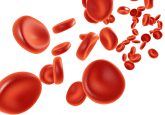Hand-held device picks up patients’ vital signs from lips and fingertips

A group of engineers and physicians from Johns Hopkins University School of Medicine (MD, USA) have developed a device capable of quickly assessing a patient’s vital signs from their lips and fingertips. The device, called MouthLab, is hand-held and battery-powered and could potentially replace the large, restrictive monitors currently used in hospitals to display patients’ vital signs. It could also be used in ambulances, doctor’s offices, emergency rooms or even in patients’ homes.
The MouthLab prototype measures heart rate, blood pressure, breathing rate, blood oxygen and body temperature. It was tested on 52 volunteers, with results comparing favorably with those measurements taken with standard hospital monitors. The device is also able to take a basic electrocardiogram.
Lead engineer on the device, Gene Fridman, explained, “We see it as a ‘check-engine’ light for humans. It can be used by people without special training at home or in the field.” He predicts that the device could be able to detect early signs of medical emergencies, and could reduce unnecessary ambulance trips and emergency room visits.
As the device measures vital signs orally, the team anticipates that future versions will be able to detect the chemicals in blood, breath and saliva that act as biomarkers for serious health conditions. “We envision the detection of a wide range of disorders,” Fridman continued, “from blood glucose levels for diabetics, to kidney failure, to oral, lung and breast cancers.”
The device prototype is a unit about the size of a telephone receiver, with a small, flexible mouthpiece holding both a temperature and blood volume sensor. A thumb pad on the unit has a miniaturized pulse oximeter, which uses beams of light to measure blood oxygen levels. Further sensors measure breathing from the nose and mouth.
The device also has three electrodes for ECGs which record blood pressure. When the ECG signal shows the heart is contracting, the device optically measures changes in the volume of blood reaching the thumb and upper lip, and specially designed software converts the data into systolic and diastolic pressure readings.
The hand-held unit transmits data using Wi-Fi to a nearby smart device or laptop, where graphs are produced to display results in real-time. Friedman explained that the next generation of the device will display its own data readouts, and ultimately, patients will be able to send results to their doctors using their cellphones. The doctors will then be able to utilize an app to upload data to patients’ medical records.
“Our final version will be smaller, more ergonomic, more user-friendly and faster. Our goal is to obtain all vital signs in under 10 seconds,” Friedman concluded.
Sources: MouthLab: patients’ vital signs are just a breath away; Fridman GY, Tang H, Feller-Kopman D, Hong Y. MouthLab: a tricorder concept optimized for rapid medical assessment. Ann. Biomed. Eng. 43(9), 2175—2184 (2015).






